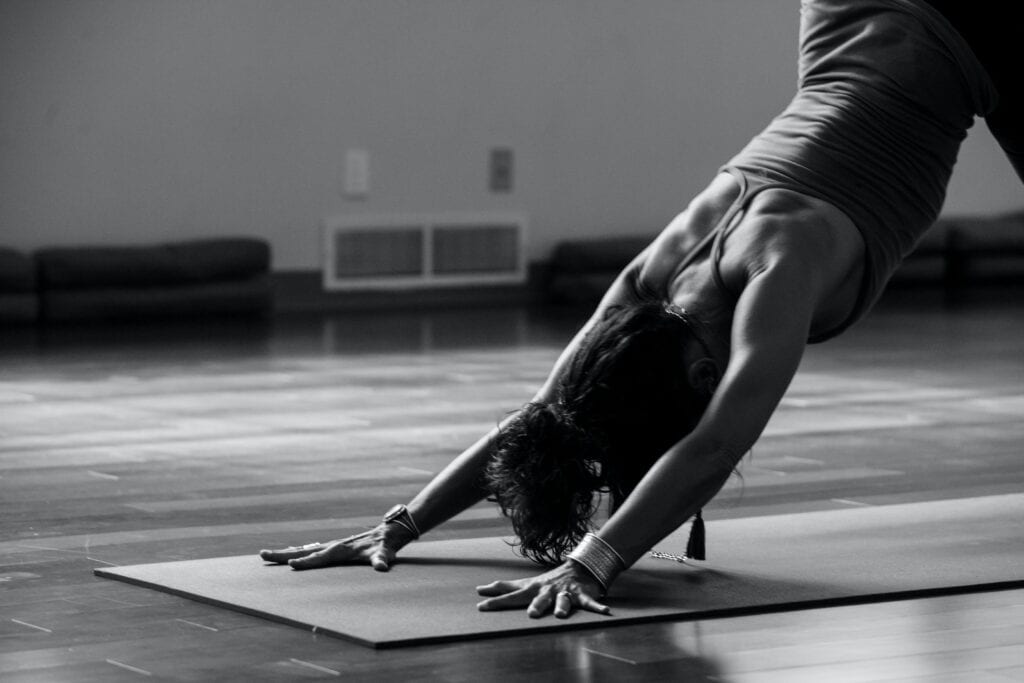There are many positives about being able to work anywhere you want in the world, but one of the important things that you lose is the ability to control your workspace.
If you have office space with a responsible company, or a well-established home office in a steady location, you have the luxury of setting up your workspace in the way that you want. This includes many things, but one of the essential elements is ergonomics.
With ergonomic chairs, standing desks, wrists rests, and foot pedestals, you can set up your workspace in a way that supports good posture, supple joints, and your long-term health.
When you are on the road, you don’t have this luxury. You probably find yourself hunched over a laptop because the table is too low, and getting a sore back after half an hour of sitting because your chair is too high. In frustration, maybe you move to the bed, which only makes matters worse.
Let’s take a look at why good posture is so important, and why bad posture is so detrimental, and why you can’t ignore an ergonomic work set up for “a few years” as you jump into the digital nomad lifestyle.
We’ll also share a few simple tips for protecting your posture while working and living on the road.
Why Does Good Posture Matter?
Good posture isn’t just about looking good rather than hunched. Bad posture for extended periods of time can have a serious impact on your health.
Spinal Curvature
Bad posture can permanently misalign your spine. As your spine spends extended periods of time in the wrong position, you weight pits significant pressure on the wrong parts of your spine, causing it to become misshapen.
When your spine is out of alignment, it is not able to absorb shocks in the same way. This puts you at a great risk of accidental injury when doing routine things, such as bending down to pick something up off the floor.
Back Pain
Bad posture puts train on the muscles of both your upper and lower back. This usually initially manifests as pain below the neck and around your tailbone at the end of the day.
Straining and weakening of these muscles also make you prone to more serious back injuries.

Headaches
The way that we slump forward over our desks put a lot of strain on the neck and tightens the muscles there.
As all the muscle are connected, this can lead to tension headaches, which can make it impossible to concentrate.
Poor Sleep
Because your spine is the core of your skeletal system, misalignment of the spine can disrupt all of your muscles, making it impossible to relax, especially at night when you want to sleep.
This can lead to both poor quality sleep and insomnia. You can read more about what we think about the importance of sleep here.

Disrupted Digestion
Poor posture can also compress your organs, which can have a series of negative effects, though the most common is poor digestion.
It tends to slow down the digestive process causing constipation.
Lack of Motivation
The evidence is in, and it is now known that not only does our mood affect how we hold ourselves, but the way we hold ourselves reflects our mood.
Slumping tends to make us feel small, unimportant, and out of place. So staying in this position for extended periods of time can have a serious impact on our self-esteem and our mood.
It can take as little as three to six weeks for regular bad ergonomics to have a serious impact on your posture. So, no, it is not really something that you can “live with” for a few years as a digital nomad without worrying about the impact that it might have on your life.

Posture Hacks for Digital Nomads
1. Lift Up Your Screen
One of the biggest problems that digital nomads have is that their screens are too low. If you put your laptop on a desk, you are going to be look down at it, and over time there is almost no way that you won’t start to hunch forward to get your eyes in line with the screen.
So, one of the best things that you can do is lift your screen up so that it is at eye level. You don’t need any special equipment for this, a stack of books or a box that is lying around in your accommodation should do the trick.
Of course, it will leave the keyboard and mousepad out of reach so…
2. Invest in a Separate Keyboard and Mousepad
You have a laptop because it is easy to carry around and get to work on wherever you are, but not only does the way that the screen is connected to the keyboard create viewing hight problems, but on most laptops the keyboard is too small, so you have to turn your elbows and wrists inwards to use it.
If you do this for hours on end, you can develop serious repetitive strain injury. If you continue to do this, one day in the future you might find that you can’t sit in front of a keyboard all day.
This is why it is worth getting a separate keyboard and mouse for your laptop so that you can do at least the bare minimum when it comes to making your workspace ergonomic. If you are willing to pay a bit extra, you can get very compact actions that will barely take up any space in your bag at all.
If you are looking for recommendations check out the Logitech K780, which is a full size wireless keyboard with mousepad. If you want an integrated mousepad, then you might prefer the Logitech K400, though a separate mouse is ergonomically preferable.

3. Bring Your Own Lumbar Support
If it is the chair that is making you uncomfortable, bring your own lumbar support. This means place a cushion at the base of your back to keep your spine forward and aligned rather than letting you slouch.
The most portable version of this tool are going to be inflatable, like the Therm-a-Rest lumbar support pillow. Don’t worry, it is self-inflatable, you don’t need to blow it up yourself. When packing, it folds down to about the size of a pair of socks.
4. Set an Alarm for Breaks
The fact is that your posture tends to get worse the longer you sit. When you first sit down, you probably align yourself properly to get to work, but as the minutes pass you subconsciously start slouching forward as you get sucked into what you are doing.
If you have a short break every 20-30 minutes can have an opportunity to reset your posture and limit the damage that you are doing.
These breaks are also good for your eyes, they can reduce mental fatigue and give you a brain boost to have better focus when you return to work.
The break doesn’t have to be long, just a minute or two (though you should be taking longer breaks throughout the day), and you can just do a few simple exercises to release you back, such as shoulder blade squeezes or wall slides.
5. Take Up Yoga
If you accept the fact that you aren’t going to be able to prevent all the damage that you are doing to your pack and posture while sat in front of your laptop, then you need to be doing something to counter act it.
There are few things better for posture than yoga. It both strengthens the muscles that you use to maintain good posture (bridge/wheel is amazing for this), but it also supports mobility and flexibility, which is excellent for injury prevention.
Yoga is actually also really good for strengthening the wrists and their mobility, and since these are another problem area laptop workers, this is another reason to do the work.
We’ve talked about the benefits of yoga for digital nomads before, you can read more here.

The Verdict
It is fair to say that we all regularly overlook many things in life that are fundamental to our health and happiness. Some of the most obvious examples are good sleep, rest and recuperation, and meditation.
Posture is another one of these things. It is something that we don’t think about all that much, and we don’t always realize when bad posture is having a seriously detrimental impact on our lives.
You have headaches for no apparent reason, you have trouble sleeping at night, your digestion is off, and you just don’t feel motivated. While these problems have many potential causes, one common and overlooked cause is bad posture.
Bad posture pushes your entire body out of alignment, so it can affect you in varied in ways without you realizing it.
Working at a desk all day in front of a computer is a major cause of bad posture. Awareness of this is growing, which is why so many companies now put a significant focus on creating ergonomic workspaces for their staff.
But when you are a digital nomad, working wherever you fund yourself, it can be very difficult to maintain good ergonomics.
Hopefully we have shared a few helpful tips to help you avoid posture problems and their related effects.











